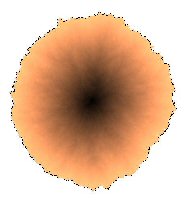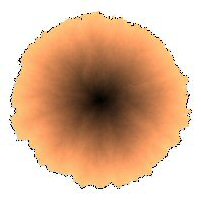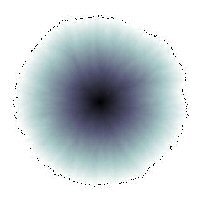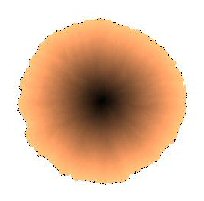Jérémie Bettinelli
École polytechniqueLaboratoire d'informatique (LIX)
91128 Palaiseau Cedex
FRANCE
E-mail: firstname « . » lastname « at » normalesup « . » org
Office: 2023
Phone: (+33) (0)1 77 57 80 61

%20t=300.png)
Jérémie BettinelliÉcole polytechniqueLaboratoire d'informatique (LIX) 91128 Palaiseau Cedex FRANCE E-mail: firstname « . » lastname « at » normalesup « . » org |
 |
%20t=300.png) |
Random colorings |
homepage |
You will find here my M2 thesis, the associated Beamer lecture, as well as some short films I made with MATLAB during the year 2007–2008 for this work. On these, you can watch the evolution of the set B(t) of the points reached before the time t from the origin in the case of a random coloring of the plane. Every vertex of the planar lattice is colored independently according to a given law, which will be denoted by "p = (p1, p2, ..., pr)," where pi is the probability for the vertex to be colored with the color i.
Click the pictures to watch the films. The 4 firts clips are in avi format, the other ones are in gif format.
On these films, the colored lattice is shown and B(t) grows with the time. The time can be seen at the top. The border of B(t) is black and B(t) is white. The films start at t = -1 (i.e. when only the colored lattice is displayed) and stop at t = 100.
| p = (1/3, 2/3) | p = (1/4, 2/4, 3/4) | ||
 |
 |
The difference with the films above is that B(t+1)\B(t) is colored brighter and brighter as t grows. In that way, we keep track of the shapes of B(t') with t' < t: that is the set of points darker than some color. The films start at t = -1 (i.e. when only the colored lattice is displayed) and stop at t = 100.
| p = (1/3, 2/3) | p = (1/4, 2/4, 3/4) | ||
 |
 |
Here, the background colored lattice is no longer displayed. The films start at t = 0 and stop at t = 100.
| p = (1/3, 2/3) | p = (1/4, 2/4, 3/4) | ||
 |
 |
The background is still disabled and we watch B(t)/t. B(t) is gradually colored as before: this gives a "zoom-out" impression. The films start at t=10 (because before, B(t) is too misshaped) and stop at the written time.
| p = (1/4, 2/4, 3/4) t = 100 |
p = (1/4, 2/4, 3/4) t = 200 |
||
 |
 |
||
| p = (1/4, 2/4, 3/4) t = 300 |
p = (1/5, 2/5, 3/5, 4/5) t = 200 |
||
 |
 |